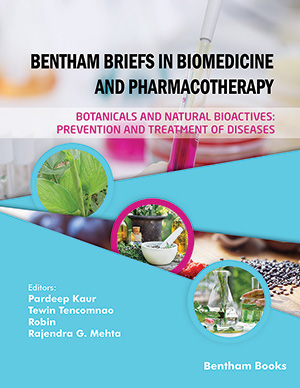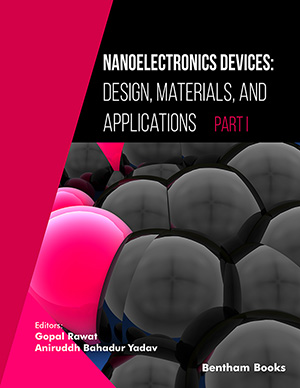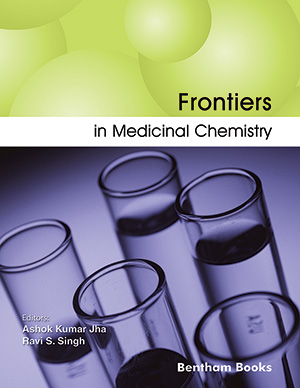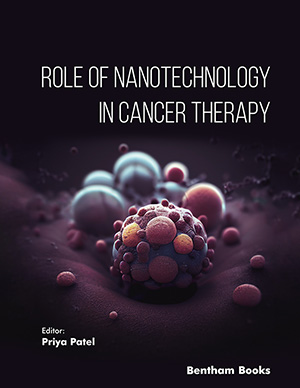Abstract
The top taxonomic position among non-chordate invertebrates, which make up the evolutionary connection between invertebrates and vertebrates, is held by echinoderms. Their immune responses rely on coelomocyte activity functioning concurrently with a range of humoral components that directly interact with invasive pathogens. However, markedly lower numbers of systematic reviews of the classification and immune function of coelomocytes have been performed compared with those of vertebrates. Studying echinoderm coelomocytes continues to be an important evolutionary vantage point for determining the origins of bilaterian immunity as well as the principles behind the adaptive immune system of vertebrates. This article reviews the classifications and immune functions of coelomocytes (sea urchin, sea cucumber and sea star). It summarizes the research progress on immune-related genes/proteins, signal transduction pathways and effector molecules in echinoderms according to the recent literature. This summary provides a theoretical basis for studying coelomocytes and disease control in echinoderms. In the future, a variety of methods and techniques should be used and combined with the surface receptors of cells to study the classification and function of coelomocytes of echinoderms.
Keywords: Coelomocytes, classification, immunity, echinoderm, humoral defense, cellular defense.
[http://dx.doi.org/10.1038/40967] [PMID: 9237746]
[http://dx.doi.org/10.1007/s002510050551] [PMID: 10398804]
[http://dx.doi.org/10.1034/j.1600-065X.2001.1800102.x] [PMID: 11414357]
[http://dx.doi.org/10.1007/s002510000234] [PMID: 11061288]
[http://dx.doi.org/10.1002/jmor.20368] [PMID: 25645676]
[http://dx.doi.org/10.1016/j.jip.2008.04.003] [PMID: 18501924]
[http://dx.doi.org/10.1111/j.1440-169X.1990.00315.x] [PMID: 37281479]
[http://dx.doi.org/10.1007/978-1-4615-1291-2_5] [PMID: 11419006]
[http://dx.doi.org/10.1016/j.dci.2014.11.002] [PMID: 25445901]
[http://dx.doi.org/10.1186/2191-0855-3-35] [PMID: 23800329]
[http://dx.doi.org/10.1016/j.dci.2008.06.013] [PMID: 18656496]
[http://dx.doi.org/10.1080/11250003.2014.922128]
[http://dx.doi.org/10.1016/B978-0-12-803252-7.00012-6]
[http://dx.doi.org/10.1002/(SICI)1521-1878(200005)22:5<469:AID-BIES9>3.0.CO;2-4] [PMID: 10797487]
[http://dx.doi.org/10.1007/BF02481710] [PMID: 9706698]
[http://dx.doi.org/10.1016/j.aquaculture.2009.08.016]
[http://dx.doi.org/10.1007/s11802-015-2696-8]
[http://dx.doi.org/10.1080/11250003.2015.1061615]
[http://dx.doi.org/10.1016/j.fsi.2013.12.001] [PMID: 24355405]
[http://dx.doi.org/10.1016/j.imbio.2014.02.006] [PMID: 24631331]
[http://dx.doi.org/10.1016/j.fsi.2017.11.021] [PMID: 29138098]
[http://dx.doi.org/10.1002/jez.1124] [PMID: 11748622]
[http://dx.doi.org/10.1016/j.cbpa.2007.01.022] [PMID: 17329136]
[http://dx.doi.org/10.3390/ijms151119472] [PMID: 25421239]
[http://dx.doi.org/10.1016/j.fsi.2022.02.009] [PMID: 35167932]
[http://dx.doi.org/10.1086/710355] [PMID: 33151755]
[PMID: 14690178]
[http://dx.doi.org/10.1379/CSC-288.1] [PMID: 18229452]
[http://dx.doi.org/10.1007/978-1-4419-8059-5_14]
[http://dx.doi.org/10.1002/pmic.201000745] [PMID: 21751360]
[http://dx.doi.org/10.1038/s41598-021-89805-0] [PMID: 34021182]
[PMID: 15329012]
[http://dx.doi.org/10.1016/j.fsi.2013.07.020] [PMID: 23911653]
[http://dx.doi.org/10.1080/23308249.2020.1839015]
[http://dx.doi.org/10.1379/1466-1268(2000)005<0113:CABRTE>2.0.CO;2] [PMID: 11147962]
[http://dx.doi.org/10.3354/ab00038]
[http://dx.doi.org/10.2307/1541455]
[http://dx.doi.org/10.1023/A:1016801521216]
[http://dx.doi.org/10.1007/978-1-4684-4766-8_2]
[http://dx.doi.org/10.1016/0022-2011(69)90236-5] [PMID: 5775463]
[http://dx.doi.org/10.15517/rbt.v69iSuppl.1.46348]
[http://dx.doi.org/10.1016/bs.mcb.2018.11.009] [PMID: 30777184]
[http://dx.doi.org/10.1242/jcs.012096] [PMID: 18198192]
[http://dx.doi.org/10.1111/ivb.12357]
[http://dx.doi.org/10.1371/journal.pone.0187987] [PMID: 29125863]
[http://dx.doi.org/10.3389/fimmu.2021.641664] [PMID: 33815394]
[http://dx.doi.org/10.1016/j.dci.2022.104352] [PMID: 35065955]
[http://dx.doi.org/10.3389/fimmu.2022.940852] [PMID: 36119116]
[http://dx.doi.org/10.1016/j.dci.2014.11.013] [PMID: 25463510]
[http://dx.doi.org/10.1016/j.jcz.2022.06.008]
[PMID: 22566951]
[http://dx.doi.org/10.3389/fimmu.2019.00870] [PMID: 31105697]
[http://dx.doi.org/10.1016/j.fsi.2018.09.058] [PMID: 30253179]
[http://dx.doi.org/10.1016/j.semcdb.2018.09.001]
[http://dx.doi.org/10.1016/j.fsi.2010.07.024] [PMID: 20659565]
[http://dx.doi.org/10.1002/jez.b.21352] [PMID: 20700890]
[http://dx.doi.org/10.1016/j.fsi.2018.01.048] [PMID: 29407619]
[http://dx.doi.org/10.4049/jimmunol.2100047] [PMID: 34965964]
[http://dx.doi.org/10.2307/1539092]
[http://dx.doi.org/10.1016/S0145-305X(99)00022-1] [PMID: 10426433]
[http://dx.doi.org/10.1007/3-540-27683-1_5] [PMID: 17152695]
[http://dx.doi.org/10.1111/j.1749-6632.1994.tb33575.x] [PMID: 8192333]
[http://dx.doi.org/10.1038/icb.2016.51] [PMID: 27192936]
[http://dx.doi.org/10.1038/icb.2016.67] [PMID: 27527904]
[http://dx.doi.org/10.1016/j.fsi.2020.12.014] [PMID: 33378698]
[http://dx.doi.org/10.1016/j.fsi.2016.06.060] [PMID: 27633669]
[http://dx.doi.org/10.1016/j.fsi.2014.11.010] [PMID: 25463287]
[http://dx.doi.org/10.1016/j.fsi.2022.108453] [PMID: 36471560]
[http://dx.doi.org/10.3389/fimmu.2021.783798] [PMID: 34970266]
[http://dx.doi.org/10.3724/SP.J.1035.2009.00207]
[http://dx.doi.org/10.1016/j.fsi.2010.03.013] [PMID: 20412860]
[http://dx.doi.org/10.1016/j.fsi.2018.03.013] [PMID: 29526698]
[http://dx.doi.org/10.1134/S1990519X09050113]
[http://dx.doi.org/10.1134/S1990519X12020113]
[http://dx.doi.org/10.3844/ajisp.2012.191.195]
[http://dx.doi.org/10.3844/ajisp.2012.78.83]
[http://dx.doi.org/10.1078/0171-9335-00254] [PMID: 12160149]
[http://dx.doi.org/10.1007/s00441-008-0674-9] [PMID: 18766381]
[http://dx.doi.org/10.1007/s00709-017-1078-z] [PMID: 28124741]
[http://dx.doi.org/10.1242/jeb.018507] [PMID: 18689408]
[http://dx.doi.org/10.1038/261227a0] [PMID: 1272394]
[http://dx.doi.org/10.1126/science.288.5463.146] [PMID: 10753120]
[http://dx.doi.org/10.1016/j.fsi.2014.09.005] [PMID: 25218682]
[http://dx.doi.org/10.1007/978-3-319-76768-0_13]
[http://dx.doi.org/10.1007/978-3-319-92486-1_8] [PMID: 30083919]
[http://dx.doi.org/10.1016/j.ydbio.2016.05.034] [PMID: 27265865]
[http://dx.doi.org/10.2307/1539393]
[http://dx.doi.org/10.1139/z77-198] [PMID: 907933]
[http://dx.doi.org/10.1007/s00441-013-1766-8] [PMID: 24408073]
[http://dx.doi.org/10.1016/0145-305X(83)90095-2]
[http://dx.doi.org/10.1007/s00441-022-03678-x] [PMID: 36083358]
[http://dx.doi.org/10.1016/j.zool.2020.125815] [PMID: 32683241]
[http://dx.doi.org/10.1007/s003000050438]
[http://dx.doi.org/10.1006/jipa.2001.5016] [PMID: 11356053]
[http://dx.doi.org/10.1016/j.jembe.2012.05.007]
[http://dx.doi.org/10.1016/j.dci.2017.09.007] [PMID: 28916267]
[http://dx.doi.org/10.1016/S0965-1748(02)00092-9] [PMID: 12225920]
[http://dx.doi.org/10.1007/978-1-4684-4166-6_7]
[PMID: 10912624]
[http://dx.doi.org/10.1016/0014-4827(78)90185-4] [PMID: 627244]
[http://dx.doi.org/10.1007/s00251-001-0421-9] [PMID: 11904683]
[http://dx.doi.org/10.1371/journal.pone.0061419] [PMID: 23613847]
[PMID: 7160510]
[http://dx.doi.org/10.1002/jez.1402670110]
[http://dx.doi.org/10.1007/s004410050517]
[http://dx.doi.org/10.1242/jeb.01001] [PMID: 15143147]
[http://dx.doi.org/10.1002/jez.1401400203] [PMID: 13802664]
[http://dx.doi.org/10.1016/0022-2011(90)90145-V]
[http://dx.doi.org/10.1083/jcb.73.2.479] [PMID: 558198]
[http://dx.doi.org/10.3389/fmars.2021.695753]
[http://dx.doi.org/10.1016/j.dci.2016.04.018] [PMID: 27113124]
[http://dx.doi.org/10.1126/science.1133609] [PMID: 17095691]
[http://dx.doi.org/10.1016/j.ydbio.2006.08.065] [PMID: 17027739]
[http://dx.doi.org/10.1111/j.1462-5822.2009.01326.x] [PMID: 19388903]
[http://dx.doi.org/10.1126/science.1134301] [PMID: 17095692]
[http://dx.doi.org/10.2174/138920212799860643] [PMID: 23024605]
[http://dx.doi.org/10.1016/j.fsi.2008.01.002] [PMID: 18282768]
[http://dx.doi.org/10.1093/oxfordjournals.jbchem.a124495] [PMID: 7798179]
[PMID: 11002186]
[http://dx.doi.org/10.3923/jbs.2005.472.477]
[http://dx.doi.org/10.1093/jb/mvh012] [PMID: 14999015]
[http://dx.doi.org/10.1093/jb/mvi005] [PMID: 15713882]
[http://dx.doi.org/10.1271/bbb.100207] [PMID: 20699569]
[http://dx.doi.org/10.1016/0145-305X(92)90023-6] [PMID: 1499841]
[http://dx.doi.org/10.2307/1541182]
[http://dx.doi.org/10.2307/1540414] [PMID: 4854477]
[PMID: 1425767]
[http://dx.doi.org/10.1016/0304-4165(73)90175-X] [PMID: 4201236]
[http://dx.doi.org/10.1016/0300-9629(91)90432-C] [PMID: 1674457]
[PMID: 1800115]
[http://dx.doi.org/10.1016/j.fsi.2015.01.026] [PMID: 25655326]
[http://dx.doi.org/10.1016/j.dci.2015.04.015] [PMID: 25956196]
[http://dx.doi.org/10.1016/j.fsi.2011.06.023] [PMID: 21752342]
[http://dx.doi.org/10.1016/S0145-305X(02)00017-4] [PMID: 12074925]
[http://dx.doi.org/10.1007/s002270000305]
[http://dx.doi.org/10.1073/pnas.83.19.7429] [PMID: 3489938]
[http://dx.doi.org/10.1016/S0006-291X(05)81104-0] [PMID: 1953727]
[http://dx.doi.org/10.1038/227277a0] [PMID: 5428194]
[http://dx.doi.org/10.1111/j.1365-3083.1976.tb03037.x] [PMID: 824720]
[http://dx.doi.org/10.1006/cimm.1994.1153] [PMID: 8200043]
[http://dx.doi.org/10.1016/S0145-305X(01)00051-9] [PMID: 11687259]
[http://dx.doi.org/10.1016/j.dci.2019.103404] [PMID: 31152761]
[http://dx.doi.org/10.1073/pnas.230096397] [PMID: 11069281]
[http://dx.doi.org/10.1016/j.dci.2011.06.005] [PMID: 21703301]
[http://dx.doi.org/10.1152/physiolgenomics.00052.2005] [PMID: 15827237]
[http://dx.doi.org/10.4049/jimmunol.1601795] [PMID: 28242650]
[http://dx.doi.org/10.3389/fimmu.2017.00725] [PMID: 28713368]
[http://dx.doi.org/10.1016/j.fsi.2016.03.031] [PMID: 26994670]
[http://dx.doi.org/10.1016/j.ijbiomac.2018.03.033] [PMID: 29526576]
[http://dx.doi.org/10.1016/0161-5890(91)90126-5] [PMID: 1861678]
[http://dx.doi.org/10.1006/cimm.1993.1027] [PMID: 8174171]
[http://dx.doi.org/10.1006/cyto.1996.0069] [PMID: 8891431]
[http://dx.doi.org/10.1371/journal.pbio.2003790] [PMID: 29023486]
[http://dx.doi.org/10.1186/s12864-020-6698-6] [PMID: 32299355]
[http://dx.doi.org/10.1016/j.dci.2006.11.006] [PMID: 17240448]
[http://dx.doi.org/10.1186/gb-2006-7-8-232] [PMID: 16930467]
[http://dx.doi.org/10.1016/j.fsi.2012.10.014] [PMID: 23103635]
[http://dx.doi.org/10.1016/j.dci.2013.07.009] [PMID: 23886491]
[http://dx.doi.org/10.1016/j.fsi.2012.09.006] [PMID: 23022054]
[http://dx.doi.org/10.4049/jimmunol.179.11.7209] [PMID: 18025161]
[http://dx.doi.org/10.1038/nri1391] [PMID: 15229469]
[http://dx.doi.org/10.1101/cshperspect.a011247] [PMID: 23284045]
[http://dx.doi.org/10.1038/srep14492] [PMID: 26412401]
[http://dx.doi.org/10.1016/j.fsi.2020.09.028] [PMID: 32971271]
[http://dx.doi.org/10.1016/j.fsi.2009.07.001] [PMID: 19615449]
[http://dx.doi.org/10.2307/1541213] [PMID: 28368229]
[http://dx.doi.org/10.1016/j.aquatox.2010.07.012] [PMID: 20678812]
[http://dx.doi.org/10.1016/0145-305X(86)90022-4] [PMID: 3770267]
[http://dx.doi.org/10.1111/j.0105-2896.2004.00116.x] [PMID: 15199959]
[http://dx.doi.org/10.1007/BF00934385]
[http://dx.doi.org/10.1038/s41418-017-0012-4] [PMID: 29362479]
[http://dx.doi.org/10.1038/nrd.2015.6] [PMID: 26775689]
[http://dx.doi.org/10.1038/nrm.2016.149] [PMID: 27999438]
[http://dx.doi.org/10.1038/nrm3999] [PMID: 25991373]
[http://dx.doi.org/10.1038/nature14191] [PMID: 25592536]
[http://dx.doi.org/10.1007/s00018-016-2209-y] [PMID: 27048813]
[http://dx.doi.org/10.1016/j.cell.2011.10.033] [PMID: 22078876]
[http://dx.doi.org/10.1016/j.immuni.2016.01.020] [PMID: 26885855]
[http://dx.doi.org/10.1038/nri.2016.147] [PMID: 28138137]
[http://dx.doi.org/10.1038/nri.2016.153] [PMID: 28163302]
[http://dx.doi.org/10.1016/j.aquaculture.2019.734399]
[http://dx.doi.org/10.1016/j.fsi.2015.12.004] [PMID: 26687532]
[http://dx.doi.org/10.1016/j.fsi.2015.09.001] [PMID: 26362209]
[http://dx.doi.org/10.1016/j.fsi.2019.04.030] [PMID: 30991146]
[http://dx.doi.org/10.1134/S1062359007030028] [PMID: 17853688]
[http://dx.doi.org/10.1016/j.dci.2014.10.001] [PMID: 25307203]
[http://dx.doi.org/10.1007/s10495-009-0420-0] [PMID: 19876739]
[http://dx.doi.org/10.1016/j.ydbio.2006.08.053] [PMID: 17010332]
[http://dx.doi.org/10.1073/pnas.1120680109] [PMID: 22416118]
[http://dx.doi.org/10.1007/s11859-008-0220-3]
[http://dx.doi.org/10.3389/fimmu.2021.621311] [PMID: 33717121]
[http://dx.doi.org/10.1146/annurev.cellbio.22.010605.093317] [PMID: 16824014]
[http://dx.doi.org/10.1038/ncomms5627] [PMID: 25115909]
[http://dx.doi.org/10.1016/j.ydbio.2006.08.067] [PMID: 17078943]
[http://dx.doi.org/10.3390/biology10090866] [PMID: 34571743]
[http://dx.doi.org/10.1101/cshperspect.a037028] [PMID: 31767647]
[http://dx.doi.org/10.1016/j.neulet.2016.01.041] [PMID: 26827717]
[http://dx.doi.org/10.1016/j.etap.2010.03.019] [PMID: 21787631]
[http://dx.doi.org/10.1016/0305-0491(95)02080-2] [PMID: 8829813]
[http://dx.doi.org/10.1016/j.dci.2013.10.013] [PMID: 24239709]
[http://dx.doi.org/10.1016/j.ijbiomac.2013.12.035] [PMID: 24393613]
[http://dx.doi.org/10.2108/zs140285] [PMID: 26245221]
[http://dx.doi.org/10.1038/416291a] [PMID: 11907569]
[http://dx.doi.org/10.1242/jcs.00373] [PMID: 12640026]
[http://dx.doi.org/10.4049/jimmunol.176.2.1154] [PMID: 16394004]
[http://dx.doi.org/10.1016/j.dci.2014.01.013] [PMID: 24468075]
[http://dx.doi.org/10.1007/978-1-4615-1291-2_5]
[http://dx.doi.org/10.1016/j.fsi.2014.10.024] [PMID: 25449705]
[http://dx.doi.org/10.3389/fgene.2019.00112] [PMID: 30838034]
[http://dx.doi.org/10.1016/j.ydbio.2006.08.045] [PMID: 17069790]
[http://dx.doi.org/10.1159/000484722] [PMID: 29212075]
[http://dx.doi.org/10.1038/s41421-018-0030-5] [PMID: 29951224]
[http://dx.doi.org/10.3389/fmars.2021.603410]
[http://dx.doi.org/10.1093/dnares/dsab012] [PMID: 34387305]
[http://dx.doi.org/10.1038/nature22033] [PMID: 28379940]
[http://dx.doi.org/10.1016/B978-012373976-6.50004-5]
[http://dx.doi.org/10.1016/j.ydbio.2019.10.005] [PMID: 31605680]






























